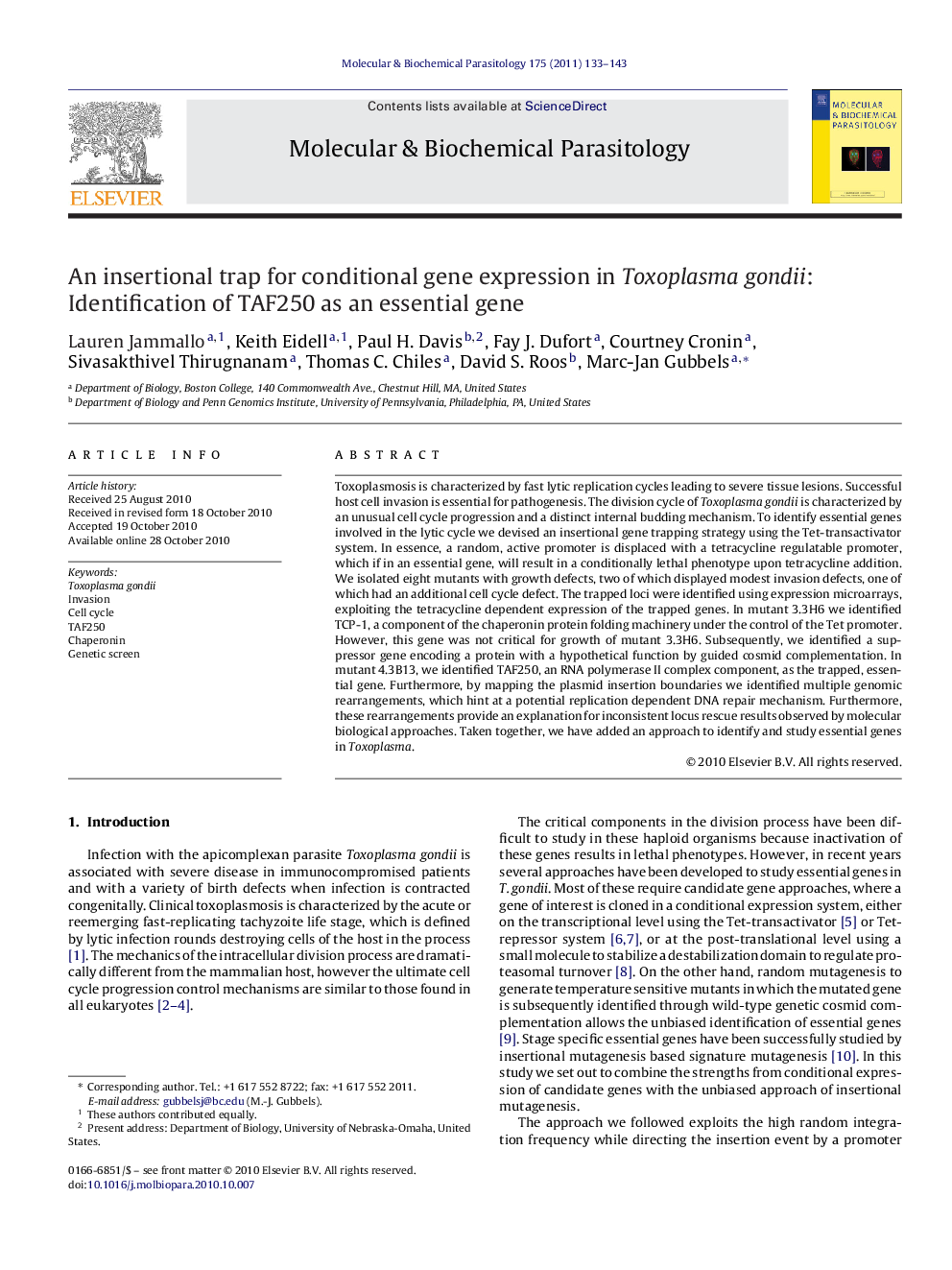| Article ID | Journal | Published Year | Pages | File Type |
|---|---|---|---|---|
| 5915675 | Molecular and Biochemical Parasitology | 2011 | 11 Pages |
Toxoplasmosis is characterized by fast lytic replication cycles leading to severe tissue lesions. Successful host cell invasion is essential for pathogenesis. The division cycle of Toxoplasma gondii is characterized by an unusual cell cycle progression and a distinct internal budding mechanism. To identify essential genes involved in the lytic cycle we devised an insertional gene trapping strategy using the Tet-transactivator system. In essence, a random, active promoter is displaced with a tetracycline regulatable promoter, which if in an essential gene, will result in a conditionally lethal phenotype upon tetracycline addition. We isolated eight mutants with growth defects, two of which displayed modest invasion defects, one of which had an additional cell cycle defect. The trapped loci were identified using expression microarrays, exploiting the tetracycline dependent expression of the trapped genes. In mutant 3.3H6 we identified TCP-1, a component of the chaperonin protein folding machinery under the control of the Tet promoter. However, this gene was not critical for growth of mutant 3.3H6. Subsequently, we identified a suppressor gene encoding a protein with a hypothetical function by guided cosmid complementation. In mutant 4.3B13, we identified TAF250, an RNA polymerase II complex component, as the trapped, essential gene. Furthermore, by mapping the plasmid insertion boundaries we identified multiple genomic rearrangements, which hint at a potential replication dependent DNA repair mechanism. Furthermore, these rearrangements provide an explanation for inconsistent locus rescue results observed by molecular biological approaches. Taken together, we have added an approach to identify and study essential genes in Toxoplasma.
Graphical abstractDownload high-res image (102KB)Download full-size imageResearch highlightsⶠTo randomly create conditional mutants an insertional, Tet-transactivator, gene-trap was devised. ⶠEight mutants with growth defects were isolated; two had an invasion defect. ⶠTrapped loci were mapped by Affymetrix genome-wide expression profiling. ⶠIn one mutant TAF250 was identified as responsible for the growth/invasion defect.
